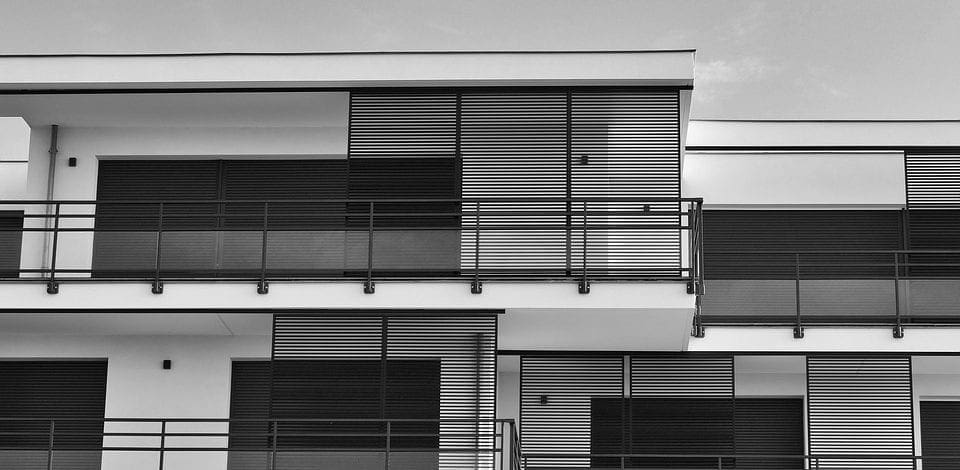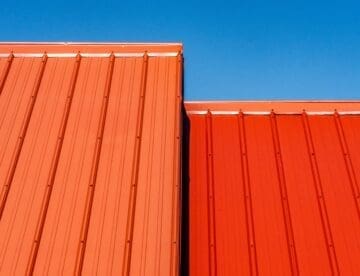Flat roofs are popular with both homeowners and contractors. These types of roofs are valued for the flexibility they provide and the plethora of roof materials available to choose from in their construction. But, the choices of different flat roof materials on the market can complicate the decision-making process. Failing to select the best and right option for your specific roofing needs can lead to protracted repairs and spending that goes far beyond your budget.
The three main types of flat roof materials are single-layer membrane, modified bitumen, and built-up roof (BUR). This article covers the advantages and disadvantages of each of these to help you make a more informed decision.
Single-Layer Membrane Roof
The single-layer membrane roof is the default roofing option in commercial properties. It’s the latest option in flat roofing technology. It is a collective name for a group of roofing materials which include:
- Polyvinyl chloride (PVC)
- Ethylene propylene diene monomer (EPDM)
- Polymer-modified bitumen
- Chlorinated polyethylene and chlorosulfonated polyethylene sheets
- Neoprene
Single-layer flat roof materials are elastomeric or plastomer material depending on the constituents of the material.
EPDM is the most common single-layer membrane flat roof material. More commonly known as “EPDM rubber roof,” it’s the material of choice in many residential and commercial properties. This flat roof material is installed as thin sheets and applied to the roof in a single layer.
EPDM features synthetic rubber or polymer, which makes it flexible enough to handle weather changes better than other flat roof materials. Your contractor will install an EPDM roof using adhesives while other single-layer materials like PVC are welded. Other options are mounted to the roof deck or held in place with a river rock ballast where the structure can support it.
Advantages of Single-Membrane Flat Roof Materials
- The materials are lightweight, negating the need to reinforce the roof deck.
- Leaks are rare with single-membrane flat roof materials such as EPDM—except where there are surface damages.
- Repairing single-membrane flat roofs like EPDM and PVC is straightforward and affordable. In many cases, the property owners can complete the repairs without professional help.
- These flat roof options can retain or reflect heat depending on your needs. If you’d like to retain heat to reduce your heating bills, EPDM roofs are the best option.
Disadvantages of Single-Membrane Flat Roof Materials
- The seams between membrane sheets are prone to leaks even with the best sealing process.
- The materials can get damaged during storms or during routine repairs because they’re not durable enough to withstand falling branches, storm damages, or foot traffic.
- The installation costs for fitting a single-membrane flat roof material may change a great deal if there are pipes, chimneys, or HVAC systems on the roof. Without proper care, the parts of the roof holding these systems can also be the source of leaks.
Built-Up Roof (BUR)
The BUR is one of the oldest types of roofs available. This flat roof option is installed using roofing felt loaded with asphalt and embedded in bitumen. It’s applied with a hot mop. The combination of the bitumen-soaked roof felt, and the hot coal tar pitch or asphalt culminates in a monolithic roof membrane. The process is repeated multiple times to create a structure two to four plies thick. Finely crushed stones are spread across the surface of the new roof to ensure it’s protected from the weather, especially sunlight.
Advantages of BUR Flat Roofs
- The design of BUR flat roofs delivers excellent protection against adverse weather conditions.
- Such roofs require very little maintenance over their lifespan.
- Most BUR repairs are all about resurfacing the roof or removing a layer or two.
- The crushed stones used to coat the exterior of BUR flat roofs make them durable enough to withstand foot traffic and similar substantial impact.
Disadvantages of BUR Flat Roofs
- The process of installing BUR is slow and highly labor-intensive due to the materials involved and the technique required to get things right.
- The combination of asphalt, bitumen, and heat triggers the release of hazardous fumes. This means it could be unsafe to run the process with other people around.
- When there’s a leak, finding the source can be challenging and may lead to dismantling the entire structure.
- The lack of flexibility in a BUR installation means the construction is prone to damage during intense winter conditions.
- Since BUR installations are heavy, the roof joists often need strengthening beforehand.
Modified Bitumen Flat Roofs
The modified bitumen flat roofing technology was developed in the 1960s as a replacement for BUR. It retains the foundations of a BUR installation but adds cap sheets or polymer reinforced roof wear into the equation.
Modified bitumen flat roofs can be installed in several ways, depending on your specific needs. The installation options available include:
- Torch applied
- Self-adhered
- Hot applied
- Cold applied
The introduction of the polymer cap sheets was a game-changer because it took care of the flexibility concerns that come with using BUR in colder climates. Styrene-butadiene styrene (SBS) and atactic polypropylene (APP) are the most common polymer options.
Advantages of Modified Bitumen Flat Roofs
- Modified bitumen installations are more straightforward and less labor-intensive than BUR.
- The mineral surfacing ensures consistency with the installation since it’s factory-applied.
- Modified bitumen is a highly durable and low-maintenance flat roof option.
- It has better flexibility and elasticity at low temperatures when compared to BUR.
- Property owners can install self-adhesive modified bitumen flat roofs without any help.
- Modified bitumen flat roofs are eco-friendly as the materials used are mostly recyclable.
Disadvantages of Modified Bitumen Flat Roofs
- Some of the installation techniques require the use of an open flame, posing some safety risks.
- Modified bitumen roofs are not as attractive as other flat roof options.
- The costs might still be prohibitive for some people.
Conclusion
From the analysis above, the modified bitumen flat roofs look like the best-rounded option to go with. However, depending on your specific needs, it might not be the best for you. To make the best decision, here’s more on how to choose the best type of roof for your home. Alternatively, you can speak to a professional roofing contractor today. Contact Code Engineered Systems at (813) 373-908 for expert advice on flat roof systems.




